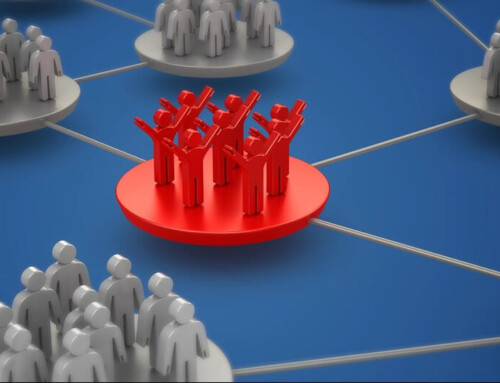Successful leaders evolve through experience and determination. They are driven by a strong desire to improve themselves, create a stronger workforce and produce organization growth. Below are five traits of great leaders that ensure success:
1. PRACTICE SELF-REFLECTION AND HUMILITY
Great leaders are invested in becoming better people and even better leaders. They constantly evolve, learn, and listen to constructive feedback. They have a deep desire to improve themselves and their performance. Being better, however, doesn’t mean that they aren’t humble. Great leaders balance being vulnerable with having respect for themselves. They want to learn how to earn the respect of employees but do so by demonstrating how they could have handled things better, how they will use the experience to grow, and how they will lead into the future with humility. Being vulnerable earns the respect of employees and makes for a more effective leader.
How to do it:
- Celebrate the small victories. Am I only interested in the big wins? How can I recognize the little things that add up to bigger goals? How can I build flexibility and adaptability into my growth planning and victory acknowledgments?
- Evaluate mistakes and shortcomings. What can be learned? What could I have done differently? How can I improve when faced with the same or similar scenario? What biases or mental barriers might prevent me from being the best I can be?
- Understand limitations. What areas aren’t my expertise? When do I need to seek help from others? Will additional knowledge, training, coaching, or hands-on experience be helpful?
- Share the success. Why is giving credit to others important? When should I provide credit, and how should I do it? How do I personalize appreciation and gratitude for each person?
- Be accountable. When is admitting to a wrong decision necessary? (e.g., teachable moment, spot the opportunity gap, see things from a different perspective, etc.) Why do I need to admit to a mistake and manage it? (e.g., understand the clarity of the moment, show why change is necessary, demonstrate the results of change, etc.)
How to recognize if this is a problem with leaders:
- A leader prioritizes power and authority over other aspects of leadership.
- A leader won’t take calculated risks fearing failure or consequences.
- A leader is reluctant to seek help.
- A leader avoids listening to and/or acting on constructive feedback.
- A leader shares little of their success with others.
- A leader doesn’t lead by example.
- A leader won’t discuss failures or mistakes in decisions.
2. STRIVE TO BE AUTHENTIC AND COMPASSIONATE
Central to the core of effective leadership is the connection between people. This means that great leaders are genuine people who are sensitive to the needs of others around them. They look at how the world and the workplace are evolving and the shifts that are taking place socially and culturally. This allows effective leaders to understand how people work, how they communicate, what motivates them, and what they expect from themselves (as well as the workplace) so that they can be supported.
How to do it:
- Get perspective to find meaning. Individual perspective is unique to each person and shaped by values, life experiences, values, cultural norms, attitudes, beliefs, and a number of other factors. The workplace, however, is greatly influenced by two perspectives: what someone wants and what someone fears. A leader may want to see the organization grow. However, an employee may fear that goals are unobtainable, the hours will be longer, they won’t be appreciated for their work, etc. Alternately, workers may want to be valued for their work, and a leader may fear low morale and lower productivity. Until perspectives are aligned, there will always be conflict. A great leader will seek not only to give a perspective but also to receive different perspectives so that everyone understands the big picture and how decisions impact them.
- Allow feelings to be felt. Feelings are part of being human, especially when there’s a crisis, stress is amplified, or the stakes are high. Leaders should be self-aware of their emotions to learn how to cope with difficult situations. However, they should recognize that others may respond differently. A different response (including showing no emotion at all) doesn’t mean that the response is necessarily wrong. Being an empathetic and compassionate leader is necessary for today’s workplace. Uncovering and validating feelings reduces panic, provides a sense of normalcy, and restores the ability of workers to gain composure faster.
PRO TIP: Healthy emotional boundaries are encouraged. Leaders should know their limitations and when to bring in additional support whether for themselves or members of their staff. Additionally, human resources should be consulted to clarify and ensure a workplace code of conduct not only exists but everyone understands it for healthy, emotionally safe workplaces. - Encourage open communication. Leaders who desire content, productive, and cooperative teams realize the value of open communication. More importantly, they recognize that open communication provides insights into issues or problems before they impact morale or employee turnover. Open communication should be encouraged because it improves leadership and teams through feedback, collaboration, and innovation. However, honest communication isn’t just any kind of communication. It must be quality, emphasize respect, and encourage accountability for all parties.
- Utilize honest and constructive feedback. Feedback is essential to individual and team development. When it’s productive (not critical) in nature, it can be a guide to measure how people are performing, what’s expected from each person, what problems need to be addressed, what goals are established, and what good work needs to be acknowledged. It’s important that feedback isn’t just one way. Instead, it should be a conversation. Problems or issues aren’t always what people do wrong. In some cases, it can be what they did despite the obstacles they encountered or the limited resources they had to work with. Be prepared to listen to concerns and different perspectives as well.
- Pair vulnerability with courage. Uncertainty is often something that people fear the most. But if you’re a leader, you will need to learn to embrace it if you want to see anything that shakes up the status quo. Innovation, change, and growth aren’t certain, and aren’t without risk. The culture that leaders need to embrace and create involves uncertainty and vulnerability. The very definition of workplace courage is “acts, related to one’s work, that are done for a worthy cause/reason, despite perceived risks, threats or obstacles to the self. Those risks can be economic/professional (e.g., lost job or opportunity for advancement), social (e.g., damaged reputation or relationships), psychological (e.g., loss of confidence), or physical (e.g., intolerable or unacceptable encounters by employees or customers). “(1)
How to recognize if this is a problem with leaders:
- A leader lacks discernment and shares too much information with their people.
- A leader seems to have unclear boundaries or lacks boundaries with their team.
- A leader allows everyone on the team to make decisions.
- A leader feels they have lost control of their people, or people walk all over them.
- A leader avoids negative feedback or problems and/or fails to address them.
- A leader who won’t ask for or accept help, doesn’t know the answer, won’t apologize publicly, and is reluctant to demonstrate emotions such as fear.
- A leader who takes all the credit and/or never demonstrates appreciation.
- A leader who is closed-minded to suggestions or input.
- A leader who is often absent or may be physically present but is distracted and unable to devote quality time to their employees.
3. CULTIVATE A THRIVING COMPANY CULTURE
A workplace where people are efficient and productive and truly love what they do is part of the job of leaders. They need to empower workers, allow them to be heard, and recognize their value. Leaders must ensure that the organization delivers on the promises that the company stands for (mission, values, etc.) and help people succeed in their job—and life so that they are more than just their role/title/what they do.
How to do it:
- Provide a sense of purpose. Employees need to know that what they do has meaning. For some people, they want to know that their work has an impact on the greater world. For others, it may mean knowing that their work changes the lives or made an impact on the business of customers. And still, others want to know how what they do each and every day makes a difference to the organization. A leader’s job is to ensure they understand what each employee defines as a sense of purpose and match that to bigger-picture information.
- Contribute to the big picture. Every employee highly desires to be appreciated and valued for the work done. They also want to share ideas, voice opinions, and be encouraged to engage in healthy conflict to challenge the status quo. Contributing to growth, innovation, and change creates a thriving organization and the very culture within.
- Build trust. The cornerstone of any grounded, healthy relationship is trust. In an organization, trust is absolutely critical. Trust ensures that everyone is treated with dignity and respect. Trust provides the basis for communication where people are seen and heard and feel emotionally safe. Leaders who have earned the respect and trust of their people fare better during a crisis because everyone knows who to look to for direction.
How to recognize if this is a problem with leaders:
- A leader believes in top-down hierarchy and enforces subordination.
- A leader deems their role to be served rather than seeking to ensure everyone develops great relationships and results.
- A leader uses a directive or one-way communication style.
- A leader focuses on limitations or constraints instead of what could possibly be done for the best outcomes.
- A leader views employees as replaceable rather than providing intrinsic value.
- A leader who doesn’t squash negative behaviors or attitudes, gossip, unhealthy conflict, etc.
4. CHALLENGE THE STATUS QUO
A successful business is based on innovation, specifically the ability to adapt and shake up how things are done. Stagnation is a problem for leadership too. Any leader who is content with the way things are or believes that “we’ve always done things this way,” lacks the fresh perspective necessary to yield big rewards. This is why disruptive leadership must challenge the status quo to identify the areas that require changes and get to work so that success can follow.
How to do it:
- View it from the outside. What do people from the outside think? (e.g., stakeholders other than employees) Is bringing in a third-party contractor to evaluate for an objective opinion necessary?
- Get in the trenches. What do things look like from different perspectives? (e.g., front-line employees interacting with prospects, customers and post-sales support, middle management, buyers, production lines, etc.) How are jobs handled, and what roadblocks are hindering their effectiveness? What tools are missing? What needs should be filled?
- Listen more openly. In meetings, who is making the most noise vs. who is most quiet? Are there conflicts between teams, departments, objectives/goals? What questions should you be asking to explore issues with a sense of curiosity?
- Encourage healthy conflict. Are there dissenting opinions, differing points of view, or alternative approaches? Do conversations lead to more ideas and viewpoints that identify problems, opportunities, or challenges that should be considered? Does healthy conflict lead to more effective decision-making?
- Embrace failure. What parts of failure should we learn from? Can we gamify failure as part of our process to encourage employees to keep trying for a better solution?
PRO TIP: Including failure as part of your process and using it in a gamification model results in more eager participants to try again to solve the problem. (2)
How to recognize if this is a problem with leaders:
- A leader leads from the top down, exclusively.
- A leader is reluctant or unwilling to get into the trenches.
- A leader doesn’t understand the work done by the people they manage.
- A leader won’t advocate for the needs of their workers.
- A leader plays favorites or allows only certain people to leverage their perspectives.
- A leader manages or controls meetings, especially when different ideas, approaches, or perspectives are presented.
- A leader doesn’t want any failure, is hard on failure, or is reluctant to use failure as a learning tool.
5. HELP OTHERS LEARN TO LEAD
Leadership and development are part of investing in employees and their futures. However, this focuses on individual growth rather than on the team. If leaders want to help their people learn to lead, they should give everyone opportunities. For example, put theories that have been learned into practice. Allow others the opportunity to resolve conflict or resolve problems. Invite members to cross-departmental meetings. These are just a few ways to learn to lead in smaller packages.
How to do it: (3)
- Know natural strengths. Every leader has natural strengths…and weaknesses. When evaluating individuals on your team, are there certain people who have strengths you lack? How can you use their talents and give them opportunities to lead while you learn?
- Understand probability patterns and blind spots. As a great leader, you should be able to assess and understand each of your people. How do they assess problems? How do they identify opportunities? How do they look for resolutions to issues and/or conflicts? How do they make decisions? Do they have specific patterns? A strong leader will not only know each person and the probability of their decision, but they will also know the gaps that linger. These are opportunities for mentoring and coaching to create stronger individuals, teams, and future leaders.
- Identify mental toughness strengths and weaknesses. Leaders should also be able to measure everyone’s tolerance on their team. This should include stress, tight timelines, failures or adversity, new challenges, learning new skills, etc. Some people will perform very well under a crisis but struggle to take on new challenges such as tasks, responsibilities, or skills. Others may struggle to overcome adversity or rejection, or be overwhelmed with tight timelines. Learning what areas are strengths and what areas need improvement can enhance personal growth and allow team members to take on more leadership opportunities over time.
How to recognize if this is a problem with leaders:
- A leader who doesn’t know the strengths and weaknesses of each individual on their team.
- A leader who is afraid to let any individual outshine them or takes all the credit for someone else’s work.
- A leader who only criticizes rather than provides mentoring/coaching opportunities for improvement.
- A leader who only leads by example rather than leading from the sidelines.
- A leader who is reluctant to address mental toughness issues.
A leader is an individual who wants to inspire others to be effective in their shared world. Leadership is an ongoing process filled with successes and failures. These experiences helped them develop habits and learn the skills to influence and inspire others to perform at levels they previously didn’t think they could.
Are you looking to reward your top performers? If so, contact Gavel International to learn more about our travel incentive programs.
_______________________
SOURCES:
- https://ideas.darden.virginia.edu/workplace-courage-when-vulnerability-signals-strength
- https://uxplanet.org/gamification-part2-5d9a3888c5cb
- https://www.forbes.com/sites/glennllopis/2014/07/29/leadership-is-about-enabling-the-full-potential-in-others/?sh=112bca2d6698
This article was last updated on March 20, 2023






